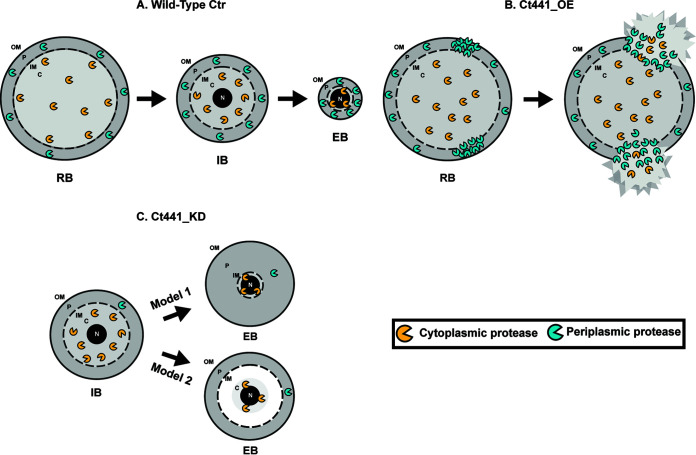FIG 7.
Proposed model for Ct441/Tsp function in secondary differentiation. (A) Hypothesized model of Ct441/Tsp targeting reticulate body (RB)-specific proteins during secondary differentiation. During differentiation, Tsp degrades periplasmic proteins to facilitate reduction of periplasmic volume concurrent with reduction of cytoplasmic volume. (B) Depiction of effects of increased Ct441/Tsp activity on RBs. Excess active Tsp degrades periplasmically exposed proteins (either specifically or nonspecifically), leading to compromised membrane integrity. (C) Two potential models in which nonfunctional EBs are produced during ct441/tsp knockdown: the membrane separation model (Model 1) and the stationary periplasmic model (Model 2). In Model 1, the inner membrane separates from the outer membrane as the cytoplasmic volume decreases, resulting in a large increase in periplasmic volume. The separation of the membranes results in a decrease in protein density, leaving only diffusible molecules to fill the space. In Model 2, the inner and outer membranes remain anchored and do not reduce in size with the cytoplasm, resulting in a “void” space between the condensing nucleoid and the inner membrane. This space likely contains readily diffusible metabolites and ions with few (if any) proteins or nucleic acids. OM, outer membrane; P, periplasm; IM, inner membrane.

